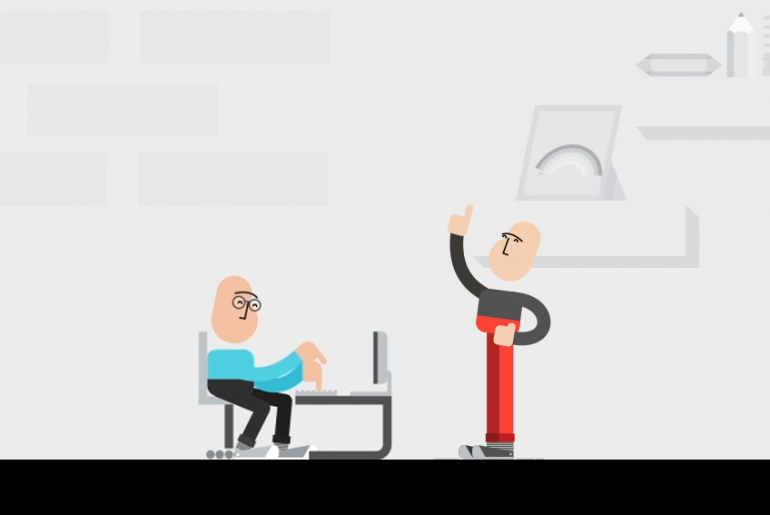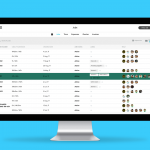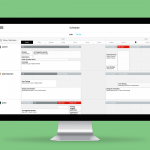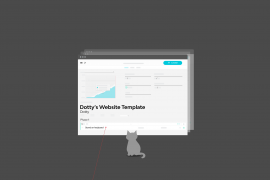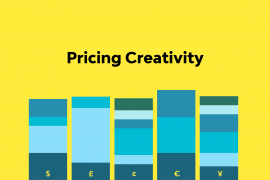More and more agencies use freelancers. Around 43% of the workforce in the creative industry is already self-employed, and 35% (around 55 million) of the total workforce in the US. So it comes as no surprise that, according to one survey, 31% of agencies planned to increase their use of contractors in 2017.
Unfortunately, engaging with freelancers can be challenging, and many freelancers — however talented — operate as mercenaries, who work on projects and for brands that don’t really inspire them, just to be able to pay the bills.
So how can you ensure you get the best out of your freelancers? We quizzed a range of experts to find out what role freelancers play in their agencies.
Reasons for using freelancers
The most common reason why an agency may decide to hire a freelancer is landing a project that can’t be resourced solely in-house.
“This may be a pure capacity issue — your team are already engaged in other projects — or it may be that the project requires a specific set of skills your team doesn’t currently possess, like hardcore data analytics,” explains Andy Budd, co-founder and CEO of strategic design consultancy Clearleft. “You bring in a freelancer for the duration of the project to help supplement an existing team.”
At digital experience studio 383, the decision to use a freelancer is based on the utilisation of the studio and the deadline they’re working towards. “Overhead cost is a big factor in any agency so we have to consider ‘can we deliver the right output with our own team or will a deadline be missed, or worse, will quality suffer?’, argues operations director Glen Duncan. “We’ll never compromise the quality of our output.”
When an agency has too many pieces of client work to simultaneously handle internally, a freelancer can provide some relief and take ownership of one of the smaller projects the team is juggling, as Josh Mobley, currently a software engineer at Little Green Software, points out. “Additionally, I’ve used freelancers to integrate into an existing team and provide knowledge on part of the stack that we don’t currently have. For example, maybe they have tremendous knowledge of CRM integrations or a particular hybrid app technology that can add value to the team.”
Belgian digital agency EPIC, meanwhile, barely ever uses freelancers for their projects. Freelancers account for less than 3% of the total annual invoices. “When we do select freelancers, we select well-known, highly skilled ones… basically only true experts,” stresses managing partner Benoit Rendeux. “We only work with them when we need a super-specific skill that we don’t have internally or someone who can advise us on how to achieve something. We once hired a DJ to check the quality of a game concept that included music!”
The approach at RED Interactive Agency is similar. If a project requires deep subject matter expertise, such as copywriting for a very specific audience, they’ll bring in a freelancer. “Recently, we worked with a copywriter who specializes in creating communication for fashion brands,” explains Jenny Greenwald, VP, talent acquisition and human resources. “The other creatives on the project really appreciated the partnership. We’ve also recently been working with a freelance Android developer to augment our development team. We have other mobile developers, but in order to tackle a project for a client partner in an optimal timeframe, we chose to ramp up the team temporarily with a freelancer.”
Be transparent with your client
Once you’ve decided that the best way forward is to bring in a freelancer, it’s important to be as upfront as possible with your client.
“Agencies seem to be reluctant to do this but often a client will be reasonable about timeline changes,” stresses Damian Borchok, co-founder of For the People, “you just need to give them some warning.”
“Transparency with clients is key,” agrees Jamie Huskisson, founder and head of client services at Magento ecommerce agency jh. “Working with contractors has a bad reputation because it’s typically hidden and you’re seen to having sold something that you couldn’t deliver on. We’re upfront when we use outside people and explain the reasons why that person will add something to what we’re doing together.”
Andy Budd adds that there’s no point trying to claim freelancers are permanent staff, as some agencies do: “This information will always come out, often at the first meeting. Asking the freelancer to pretend to be a permanent member of the team puts them in an awkward situation, and starting off a relationship by lying to your customers is never a good idea.”
Equally, if something goes wrong, own up to it. “Blaming an outside freelancer for project failure is absurd,” Huskisson sighs. “You got the management wrong. Take responsibility as if it were somebody right next to you, because they basically are.”
How to find freelancers
There are all kinds of ways to find the right freelancers for your projects. Clearleft, for example, have set up a twice-yearly freelancers meetup in Brighton in the UK, where they are based. “This is our opportunity to introduce ourselves and the work we do to the freelancer community, meet new talent and build a personal connection,” Andy Budd explains.
Jamie Huskisson favours a similar approach. “We find freelancers largely through face-to-face networking like our monthly Design Exchange event,” he says. “In our eyes, if you’re smart enough to be heading to events and trying to expand your knowledge, then you’re our kind of person and we’ll want to work with you.”
Then there are professional networking platforms for creatives like The Dots. But, as founder Pip Jamieson points out, “creative self-promotion online has focused far too much on the shiny output — the portfolio — and not enough on the thinking that goes into creating good work — the case study.”
Jamieson adds that clients are much more interested in understanding how a person ticks.
“What problems are they solving? What thought process led them to a specific solution? Clients want to hear more holistic stories behind the project. While the aesthetic is still incredibly important, creatives need to provide substance beyond their creative output.”
Also don’t just look for great talent. “If a company has to choose between two freelancers, interpersonal skills swing the decision every time. It’s just too much hassle to manage moody people with big egos.”
A lot of agencies use their own network and word-of-mouth to find quality people. “If my friends are willing to recommend a former colleague and happy to work with them again, that’s a good starting point,” says Josh Mobley.
In fact, RED Interactive Agency and For the People both use freelancers that they’ve worked with for years. Some are former employees or referrals from their team or people they trust. Sometimes RED Interactive Agency also use freelancers that have applied. They get vetted and employees periodically check in with them.
If you do need to hire people you haven’t worked with in the past, make sure you check them carefully.
“Over the years I’ve seen plenty of freelancers toting impressive portfolios only to find out that they don’t have the skill to produce work of similar quality when they’re given a job,” complains Damian Borchok. “In these instances it’s quite likely that the freelancer is trading off the talent of the wider team that’s delivered a piece of great work. It’s important to properly interrogate the work and skills of an individual freelancer. Don’t accept anything at face value.”
“You have to select your freelancers with the same diligence as any other member of the team,” Clearleft’s Andy Budd agrees, “and ensure they have the skills and attitude needed to represent your organisation at the highest levels. If you wouldn’t want to hire the freelancer for a permanent role, you probably shouldn’t use them on a client project.”
How to onboard freelancers
Ensuring you get the quality that you need from freelancers is crucial.
“If you don’t work with outstanding freelancers, you lose in so many ways,” argues Damian Borchok. “You lose time, money, and attention on other projects. Compound that with having to do reworks and the possibility of reputation damage, and things can get very ugly. Last year we won Design Agency of the Year in Australia. We can’t have that position eroded by bringing in the wrong people.”
The onboarding process differs from agency to agency, and a lot of organisations get it wrong.
“If you don’t have any technical folks internally to keep watch over the work that your freelancer is doing, it can be difficult,” Josh Mobley admits. “If you do, then I’d advise to treat them as a member of your team. Give them repo access to their projects, use a consistent approach to reviewing and merging new code and take the time to include them in that process. Code reviews can be a great time to ensure both the quality of the code and to inform your freelancer about any code style or patterns you prefer internally to make that code more maintainable for your team moving forward.”
RED Interactive Agency surrounds their freelancers on projects with a team of full-time employees. “Whenever possible, we like to have them work onsite in office with us,” explains Jenny Greenwald. “This increases the team communication and allows the freelancer to be privy to the casual internal conversations about the work and client objectives. We find that this helps align the freelancer’s efforts with the needs of the project and team.”
In order to onboard a new freelancer to the agency’s process, clear communication about the expectations is required from the team. “The nice thing about working with the same roster of freelance talent is that we can make the investment in getting them up to speed on our process,” Greenwald adds, “and they don’t have to relearn it each time. Any time you work with someone new, or onboard a new team member, there is a learning curve, of course. But this is overcome by frequent and clear communication.”
This also means making project goals and requirements absolutely clear from the start. Make sure there’s a spec or a brief and run through it with the freelancer before the beginning of the project.
Also, as Josh Mobley points out, remember that your freelancer is likely juggling multiple projects at the same time and communicate deadlines and milestones well in advance, so they can shape their schedule to meet those needs. If your freelancer is not around when project conversations take place outside of a formal meeting, it’s vital to keep them informed and provide context of any changes.
Mobley often encourages project managers to send out short, daily emails or Slacks to the entire team that include any new information about a project that day, an end-of-the day recap, to make sure everyone has the same visibility into a project.
383 has a strong network of freelancers (who they refer to as ‘partners’) that have all been through a stringent onboarding process, so they’re fully up to speed, not just with the agency’s tools, processes and methodologies but also its culture and how the team delivers the work.
“Having a close relationship with our partners in this way means they’re constantly up to date with 383, which keeps any potential problems to the minimum,” explains Glen Duncan. “We assign an internal contact to the partner for oversight, to ensure questions can be asked and quality checked. This is discipline-matched, so for development we’d assign and engineer.”
New freelancers are invited to a Partner Network Onboarding Day, which is held quarterly at the 383 headquarters. It features a series of presentations from each department, which covers everything from the agency’s value proposition and products to programme management and business operations.
Freelance frontend and WordPress developer Marc Jenkins has worked with agencies that have done both good and bad jobs at onboarding him. He says that the best agencies have made him feel welcome, brought him into the team and trusted his experience. Among other things he suggests creating an onboarding document to make the freelancer feel settled.
“One agency I worked with gave me access to their intranet, which had information on who was in the team and what their roles were, their responsibilities, the processes, etc. It was a great way for me to get quickly up to speed.”
Jenkins adds that a lot of agencies already have some kind of employee onboarding document for new processes and recommends using it as a starting point for a freelancer document. Any confidential information only relevant to full-time employees can easily be removed. He also suggests not to sit them in a corner away from everyone but to get them involved as much as possible, including meetings if necessary.
Clearleft favours a similar approach. The agency tries to treat their freelancers like staff. “We invite them along to birthday lunches,” Andy Budd enthuses, “they join our weekly company rituals, and attend company day-trips to London. Freelancing can be lonely and stressful at times. Our freelancers seem to appreciate being treated as one of the team. They also like the fact that we tend to pay them before their invoices are due.”
How to pay freelancers
Jamie Huskisson agrees that paying invoices before they’re due is a good way to look after your freelancers and maintain a happy relationship.
“Having been a freelancer in the past myself, I always pay invoices on the day they’re received,” he says. “If as an agency I don’t have the cashflow to pay a freelancer prior to my client paying, then, in my opinion, the freelancer has better options in the market to work for. If I pay immediately, they’ll appreciate it, and they’ll be allowed to focus simply on doing their best work.”
As Clearleft treats freelancers like permanent staff, they also aim to pay them a good market rate. “This can have a big effect on our bottom line,” he explains, “so we’re keen to avoid perma-lancers. While we do occasionally swap freelancers out for permanent staff when somebody becomes available, we try to do this in a way that retains as much tacit knowledge and momentum as possible.”
Richard Carter, director of web design agency Peacock Carter, tends to be led by the freelancer’s day rate. “This can be challenging when we’re working with a fixed fee for the client,” he admits. “A few of the freelancers we use are very close to our own day rate, but these are more experienced developers who we have a good relationship with, and I know there will only be a small overhead to keep the project on track, and the client will get a quality deliverable when we’ve told them they’ll get it.”
Digital strategist and developer Josh Mobley also advises against just translating a salary into an hourly wage: “This is problematic for freelancers due to the additional tax burden of being self-employed, the lack of employer-subsidized healthcare and other benefits. Additionally, there is a level of risk and opportunity cost to factor for freelancers. It’s difficult to keep a full schedule of work due to moving timelines and changing scope.”
As a starting point Mobley often takes the annual salary the freelancer would earn in his organisation, then determines the hourly wage and multiplies that by two.
When working with freelancers there’s sometimes a concern that they may not feel as committed to the project as the rest of the team. If you put a lot of care and effort into your selection, vetting and onboarding process, as described above, you can avoid that, however.
And if a freelancer isn’t working out, act quickly. Damian Borchok remembers: “I once worked with a finished artist who would give his freelancers half a day to demonstrate their skills. They’d be gone by the afternoon if they didn’t meet his expectations. He was paying top dollar for their skills, so he was right to expect top performance.”
So, if you get your process right, working with freelancers can be a great way of trying out people that may end up taking a permanent position with your agency. Crucially, you can also learn new skills and perspectives from your freelancers.
______
Streamtime’s free plan is perfect for those wanting to keep on top of their work and keep things organised. Sign up today!


